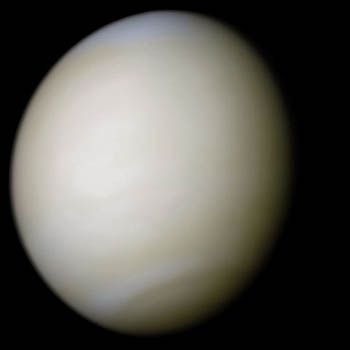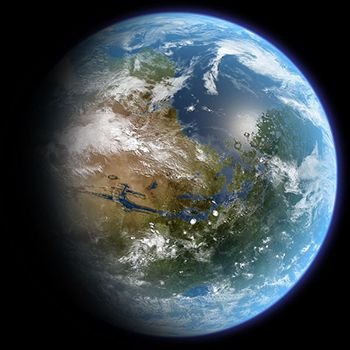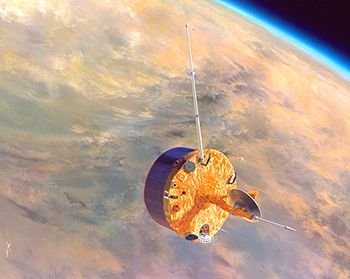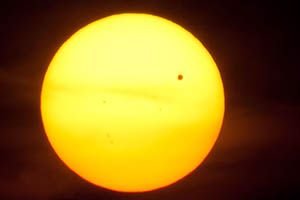The Death of Earth’s Sister Planet - VENUS
Known as the second planetary object away from the Sun, second to Mercury, Venus got its name from the ancient Roman goddess of sex, love, fertility and beauty. The only planet named after a female, which probably is because, out of all five planets known to the Roman astronomers at the time, Venus was the brightest of them all. Initially believed to be a pair of different interstellar objects, the evening and morning star, Vesper and Lucifer. Vesper is known to appear at sunset, while Lucifer appears at sunrise.
Today, the planet has been observed to be a difficult planet, plagued with hellish atmospheric conditions. The planet has been uncooperative when several space missions, with the mission of observation who try to observe the planet; these spaceships don’t usually last long due to the planet’s extreme weather conditions.

Physical Characteristics
Often referred to Earth’s twin or sister planet because of the striking similarities between both planets in mass, size, density and composition. Despite it not being the closest planet to the Sun, yet it is the hottest planet in the milky way galaxy.
Venus possesses a hellish atmosphere with temperatures reaching 870F (465C) which is adequate to melt lead. The atmosphere contains mainly carbon dioxide, as well as clouds with sulfuric acid, scientists have discovered traces of water in the planet’s atmosphere. Possessing the heaviest atmosphere in the entire galaxy, this amounts to a surface pressure that is 90 times greater than that of planet Earth.
Venus Surface
Two third of the surface of Venus is covered with smooth, flat plains which is impaired by a lot of volcanoes, possibly thousands of them ranging from 0.5 - 150 miles wide, lava from these volcanoes flow out and carve canals estimated to be around 3,000 (5000) long; longest in all the planets in the entire milky way galaxy.
A third of the surface of planet Venus, comprises of six mountainous regions, Maxwell, which is a single mountain range is about 870 km (540 miles) long, it also measures up to 11.3km (7 miles) high. Hence, the highest point on the planet.
Other Physical Structures of Venus
Venus possesses some amazing surface features far from anything seen on our planet. For instance, the planet possesses crowns or coronae; these are ring-like formations with an estimated range of 155 to 580 km (95 - 360 miles) wide. The origins of the crowns as explained by scientists was a result of the hot items under the crust soars up, warping the planet’s surface in the process.
The planet also possesses tesserae also known as tiles, which are elevated areas where many valleys and ridges and created in several directions.
Climate
The topmost layer of the clouds of Venus moves around the planet every four days (Earth-day) which is spurred by a forced wind that travels at 224 mph (360 kph). This hyper-rotation of Venus’s atmosphere, which is 60 times quicker than the Planet itself rotates, is probably the planet’s biggest mystery. The wind at Venus’s surface is much slower, it moves approximately at a few miles per hour.
Orbital Characteristics
Venus orbits differently from the planets in our galaxy, it rotates in the opposite direction to the Sun, a phenomenon known as “retrograde rotation”. As a result, the Sun rises in west and sets in the East of the planet, contrary to that of Earth where the Sun rises in the east and sets in the west. The possible reason for the weird rotation of Venus might have been a past collision with an asteroid or some other strange object, which altered the planet’s rotational path.
Venus orbits the Sun in 225 Earth days, in contrast to Earth’s 365 days that makes a year. A day in Venus lasts for 117 Earth days.

Before Venus Got HOT!
It is believed that early on in planet Venu’s history some 3 billion years ago, there was a time the planet was habitable and the planet could support several forms of life, based on models from NASA researchers. The climate was believed to be balmy and had vast oceans. What is believed to have caused the demise of the bright star was ultraviolet rays from the Sun, which swiftly evaporated water found on the surface of the planet which made the planet maintain its prolong molten state.
Today, the planet’s surface is incredibly dry, void of any liquid this is as a result of the scorching heat which was generated by the planet’s ozone-filled atmosphere. If for any strange reason liquid finds itself on Venus, it will boil away almost instantly.

Research and Exploration
No less than 20 spacecraft has been deployed to Venue by The Soviet Union, United State, Japanese Aerospace Exploration Agency and European Space Agency. In 1962, NASA’s Mariner 2 approached the planet within 34,760 km (21,600 miles), this was the first time a plant will be monitored by a passing spacecraft. December 15, 1970, the Venera 7 of the Soviet Union made history by being the first spacecraft to land on another planet, and transmit data back to planet Earth.
98% of Venus’s maps were generated by NASA’s Magellan which was the first Venusian orbiter. It showed details of the surface of the Venus by the use of radar, displaying features as small as 330 feet across.

The Future of the Planet
The Sun, like every other thing, has a lifespan, with just 5 billion years of regular activities left one will have to wonder what happens next when the most important star of the milky way galaxy dies. Nuclear fusion or proton-proton chain occurs over time as the Sun slowly converts its hydrogen into helium, this process is what gives the Sun its enormous energy. Now, when the Sun runs out of hydrogen, it will set off a new phase of the Sun’s life cycle - Death.
With the death of the Sun, comes a series of several events, one of which is the expansion of the Sun. The Sun will expand tremendously in size that it will engulf the orbits of Mercury, and Earth’s twin planet - Venus. This will mark the end of a planet that has endured a troubling history.
This expansion of the Sun is believed to encroach the atmosphere of our home planet - Earth. But due to the harsh changes that Earth must have been through, by this time, the planet may not be able to support any form of life anymore.
What do you think will happen to the human race?
REFERENCES






You received a 60.0% upvote since you are a member of geopolis and wrote in the category of "geology".
To read more about us and what we do, click here.
https://steemit.com/geopolis/@geopolis/geopolis-the-community-for-global-sciences-update-4
Gracis!
=======================================================================================
This post was upvoted by Steemgridcoin with the aim of promoting discussions surrounding Gridcoin and science.
This service is free. You can learn more on how to help here.
Have a nice day. :)
Quite an interesting post, but i need not worry about what's gonna happen 5billion years from now. I doubt the human race would thrive that long. As for Venus.... Shit happens 😐, I mean they probably had time to seek a new habitat before day X.. Wait! Was earth inhabitable 3billion years ago?? 😱
Humanity is a virus, and I am very positive it will find it's way to another planet or galaxy if that's what it'll take to survive. And 3 billion years ago, Earth wasn't habitable for humans due to obvious reasons - lack of oxygen. But an article I came across presents evidence of life on earth 3.5 billion years ago.
The planet does sound as complex as some women. Such a lovely name for such an uninhabitable planet! I admire the depth of research and work you put into this post @agbona. Great article bruv!
This legitly cracked me up big time!
While piecing together this post, I was genuinely saddened by the planet. I mean it is a classic representation of zero - hundred (in reverse - real quick). Today, you're habitable, beautiful and heavenly, a few billion years down the line, BOOM! you're the new Hell
Life screws everything up, I mean everything - literally!
Being A SteemStem Member
Interesting read
Thanks!